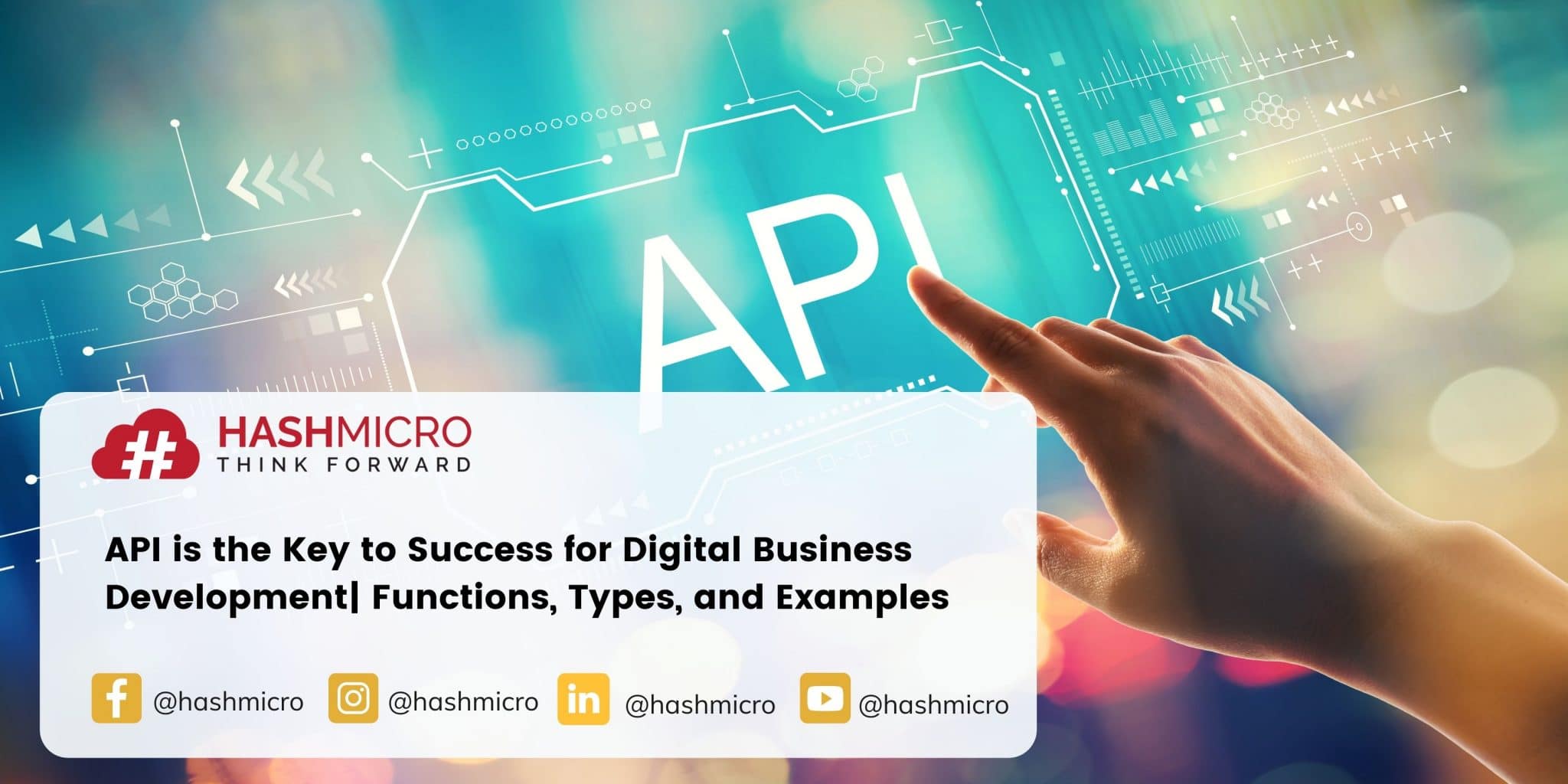What do you think if you could quickly develop an application without having to build all of its components from scratch? Indeed the developer’s job will be more accessible, and application development will be more efficient, right? This is where the API, API, or application programming interface is an interface that can connect two or more applications simultaneously and make programming much more accessible.
For example, you are building an application that requires a camera. You need an iPhone camera to take videos and photos. Then, you as a developer no need to create a camera interface, but you just need to use the camera API and embed it in your application. for example, you can apply this programming code to connect the Booking Management Platform with a service provider company.
We will discuss any further API, its functions, types, and examples of implementing APIs for data companies to understand more deeply.

Table of Contents
What is API?

The application programming interface (API) is a set of programming codes that helps developers integrate data between two different applications simultaneously. APIs allow developers to build applications using various elements such as functions, protocols, and other tools. The API can be used to communicate with multiple programming languages.
The easiest way to understand APIs is to compare them with activities you might experience in your daily life. Suppose you visit a restaurant and want to order food and drinks. In the e-menu, you can see the dishes they offer along with their descriptions. After ordering, they will also prepare your order in the restaurant kitchen.
As a customer, you don’t need to know how the restaurant prepares your order because the most important thing is that they prepare the food you order correctly. The same goes for APIs. As a developer, all you have to do is choose the API tool you need and understand the instructions without knowing how it works.
As a simple example, developers don’t need to know how the operating system creates a Save As dialog box in an application or website. What you need to know is that the dialog box allows you to save an existing document.
How Does the API Work?
After the example above, we have one more parable that might help you understand it better. For instance, when you book a ticket to a single destination, the travel app sends a request to the API of the partner airline. Once the application successfully connects to the airline’s API, the data request is forwarded to the airline’s server. However, if the number of API requests exceeds the allowed threshold in a short time, you may encounter an API rate limit exceeded error. This occurs when the server restricts access to ensure fair usage and maintain system performance.
Furthermore, the API will provide information if the travel application requires a flight to the destination city and the prospective customer’s data.
After that, the API will transfer information from the server to the travel application, namely data from the airline. Generally, several different options will appear from several airlines. Data requests to multiple flights take place simultaneously.
As a potential customer, you can find and choose the appropriate airline and do the reservation or schedule without leaving the travel application.

Also read: The Importance of Agile Methodology in Software Development
API functions
APIs can help simplify software or application development quickly. In addition, it’s can also provide various conveniences for developers.
- The integration process between the two applications makes application development faster and more effective.
- The load on the server is low because there is no need to store all the data.
- Build complex but more functional applications.
The Gojek application is one example. In this application, you do not need to create a maps interface, but you can integrate the Google Maps API, and you can access maps and locations in just one application.
Four Types of APIs You Need to Know
1. Public API
As the name implies, this API can be used by anyone on all platforms. Apart from that, this type of API is the easiest for you to use. You can register directly with the app or take advantage of it directly on the app. For example, the API for Google Maps and the API for Indonesian COVID data.
2. Private API
The second is an API designed to improve solutions and services within your company. Internal developers can use these APIs to integrate their enterprise IT systems or applications and use existing systems to create new designs or customer-related applications. Even though the application is public, the interface remains available only to those working directly with the API publisher.
This private strategy gives the company complete control over API usage. For example, an API from the back-end to transfer information about a website to the front-end.
3. Partner API
You can use partners for the public good, but only if you already have permission to use them. As with APIs to the public, you must first register with your application programming interface provider. Then you can only use it in specific applications that have been agreed upon. For example, the API Pinterest.
4. Composite API
type of API stores data from several different servers or hosting in one place. Of course, this will be a massive time-saver for users because users can access various types of data in one access.
API Architecture

There are three architectures that APIs generally use, including:
RPC (Remote Procedure Call)
RPC is a technology that allows communication between the client-side and the server-side using a simple concept. There are two types of RPC, namely XML-RPC and JSON-RPC. As the name implies, XML-RPC uses the XML format as its data transfer medium, while JSON-RPC uses JSON for its data transfer.
SOAP (Simple Object Access Protocol)
This second architecture uses XML (Extensible Markup Language) and can store all data in a document.
REST (Representational State Transfer)
This API is very popular because of its ease of use. No need for lengthy and complex coding to use it.
REST uses JSON as its data form, so it’s lighter. The performance of the application also becomes better. However, understanding the need for SOAP and REST APIs depends on the business use case
Some Examples of API
1. Google Maps API
One of the most common API examples is Google Maps. In addition to APIs for displaying static or interactive maps, apps use APIs and other features to provide users with directions and points of interest.
2. Facebook API
Facebook also provides an API. As a social media platform, Facebook, data user account details such as posts, payment details, and games.
This may allow you to view your Facebook profile or fan page on your website. In this way, your profile will be recognized by your visitors.
3. Qantas API
Many airlines offer APIs. One of them is Cantus. Customers can book tickets on the official website of this Australian transportation company. However, it also provides APIs for other applications and websites. The application programming interface they provide contains data for booking tickets on other platforms. For example, the departure schedule, the number of available seats, ticket prices, etc.
Also read: Return on Equity (ROE): An Indicator to Measure Company’s Performance
Conclusion
The application programming interface is a set of programming codes used to integrate data between two different applications simultaneously. APIs can be a private, partner, or public based on their access rights. Then, on the other hand, APIs fall into the categories of database APIs, operating system APIs, website APIs, and remote APIs based on users. Commonly used APIs for architecture are RPC, REST, and SOAP.
The existence of this programming code is crucial for your business to be able to integrate two different applications. Before that, make sure that you are using the right application in your business optimization efforts. ERP system is a data management solution that supports business processes with an automated, integrated system.
These systems integrate several business functions such as accounting, inventory, manufacturing, talent, purchasing, SCM, sales, and CRM. ERP can simplify various complex business operational activities, increasing efficiency, saving costs, and optimizing your business productivity. Different business scales can use this software, whether small, medium, or large.
If you are still confused about the modules you need in an ERP system, don’t hesitate to ask the right ERP solution provider. HashMicro provides free consultation for those of you who are planning to implement ERP in your business.
Warning: Undefined array key "med" in /home/hashmicr/public_html/blog/wp-content/plugins/insert-headers-and-footers/includes/class-wpcode-snippet-execute.php(419) : eval()'d code on line 281

































